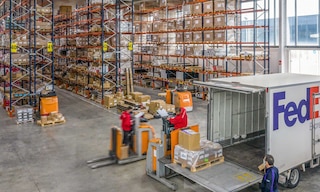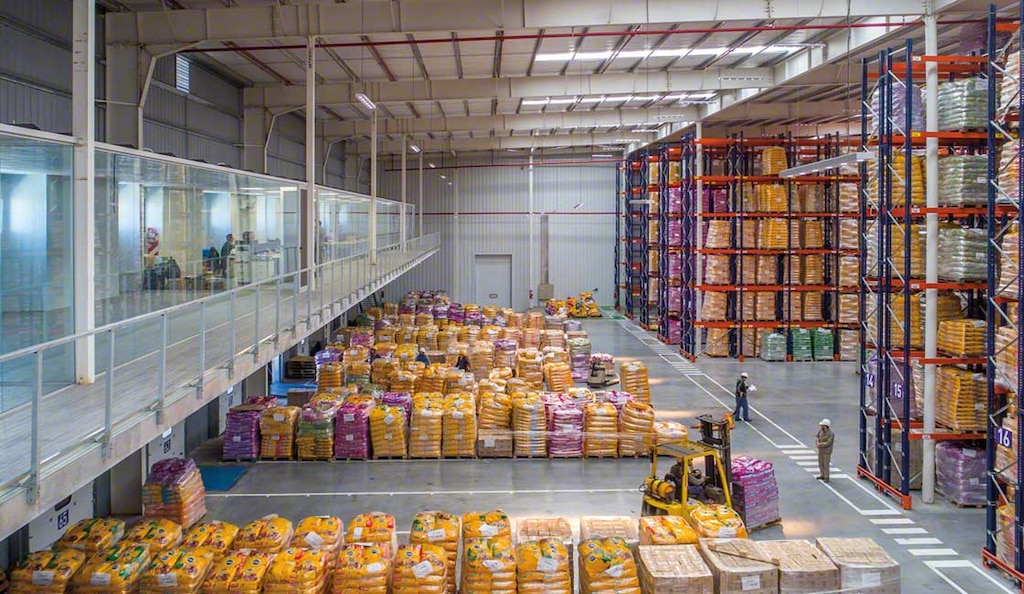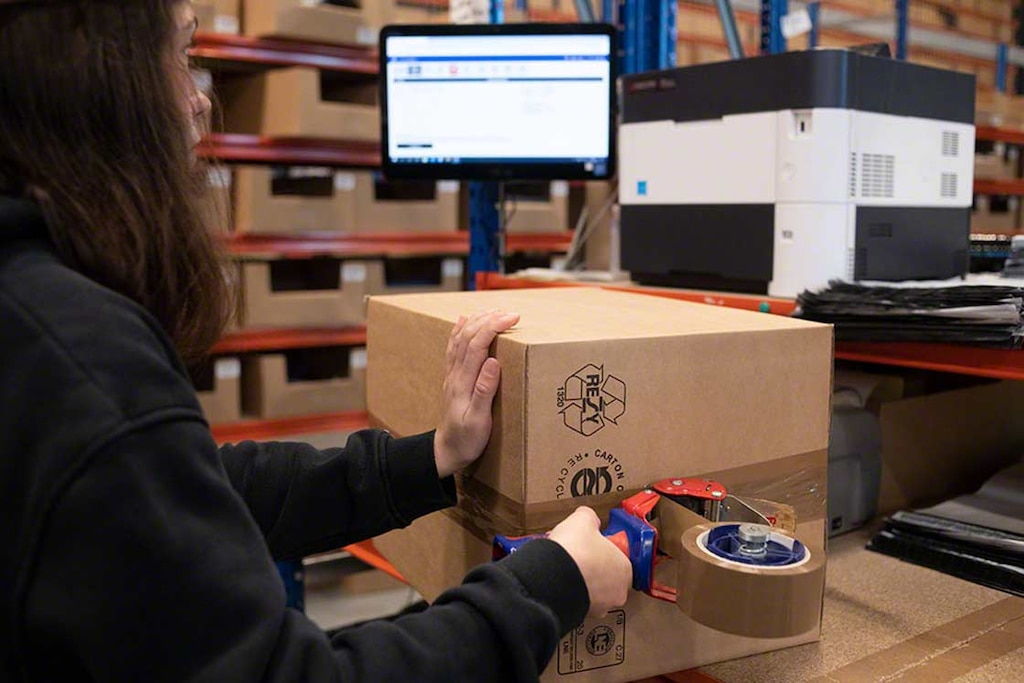
Zero stock: reducing inventory to boost efficiency
Zero stock is a logistics and production strategy that aims to reduce the number of SKUs in a warehouse in order to bring down operating costs. The goal is to ensure that there is no non-moving inventory without a purchase order to back it up.
In this post, we shine a light on zero stock, its major benefits, how to apply it in your facility, and its relationship to production systems such as just-in-time (JIT) and e-commerce models such as drop shipping.
What’s zero stock?
Zero stock, also known as zero inventory, is a logistics planning strategy designed to limit the maximum number of SKUs stored in the warehouse to save space and avoid incurring non-productive costs. Logistics facilities only receive products previously requested by the customer, minimizing the reserve inventory.
A zero stock scenario is one of the main goals of logistics strategies and production systems focused on lowering additional costs in the warehouse, including just-in-time and cross-docking. Applied to highly competitive sectors such as e-commerce and the manufacturing industry, these strategies look to maximize the throughput of all processes and eliminate errors and defects that increase companies’ operating costs.
The just-in-time model, originally developed by Toyota, pioneered the implementation of zero stock strategies. It formed part of an organizational system geared towards achieving maximum productivity by doing away with superfluous expenses. This production philosophy is reflected in what’s known as the five zeroes: zero defects, zero downtime, zero delays, zero paper, and zero inventory.
Advantages (and disadvantages) of the zero stock policy
The zero stock strategy promotes the reduction of inventory in the warehouse, which helps to:
- Prevent loss of stock due to impaired quality or out-of-demand products, which occurs especially in companies that operate with inventory that will eventually become obsolete or goods with an upcoming shipment date. This affects businesses in the food and automobile industries, for example, as well as those in sectors with special offers and fluctuating demand, such as the fashion and retail industries.
- Trim warehousing costs, as this strategy notably reduces the need for reserve inventory. Zero stock calls for less locations and, thus, a smaller storage area. The remaining space can be used for other operations that contribute towards enhancing the business; for instance, you could expand the production zone or goods receipt and dispatch areas. You could also set up a staging area that acts as a buffer, that is, a storage area that temporarily houses goods while they await the next operation.
- Optimize human capital: the implementation of this inventory policy enables you to reassign operators to higher value work.
Nevertheless, the zero stock strategy requires accuracy in supply-chain procurement. Any imbalance between incoming and outgoing stock orders will lead directly to a stockout; consequently, it will be impossible to deliver the order to the customer. As a matter of fact, by not operating with safety stock, companies that implement a zero stock policy don’t have elastic logistics and, thus, can’t adapt to unexpected spikes in demand.

From just-in-time to cross-docking: 3 zero stock strategies
The premise of minimizing warehouse inventory to reduce cost overruns is key in many stock management policies in today’s logistics scenario. These are the most popular ones:
- Just-in-time: production organization system in which the facility has only the stock or finished product required to fulfill purchase orders. With the JIT strategy, the goods arrive in the necessary quantity and at just the right time to carry out production operations.
- Cross-docking: order preparation method in which the goods are dispatched directly to the customer without being stored previously. Hence, the stock remains in the facility for the shortest possible time. The warehouse receives the goods, places them in a buffer (or staging area), and dispatches them without having stored them in an actual storage system. As this organization method requires the entire supply chain to be perfectly in sync, supply chain digitization becomes essential for preventing errors and stockouts.
- Drop shipping: e-commerce practice that allows you to sell products without having stock on hand. In this business model, the vendor (drop shipper) only manages the transaction. It acts as an intermediary between the customer purchasing the product and a third-party supplier that stores the stock and will be responsible for shipping the order to the buyer according to the agreed-upon time and conditions. So, the drop shipper neither manages nor stores the inventory it sells: its stock is, effectively, zero.

How to implement a zero stock strategy
With a zero inventory policy, it’s vital to ensure efficient stock management. This means that manual goods control needs to be replaced with digital systems that coordinate supply orders with purchase orders. All operations in the warehouse or production center need to work hand in hand to minimize the levels of stock stored and guarantee supply. A warehouse management system (WMS) is the ideal tool for maintaining tight control over product receipts and dispatches, location management, and order picking.
Another cornerstone of the zero stock strategy is to slash lead times, that is, the average procurement time for products and/or raw materials. To do this, it’s also crucial to be equipped with a WMS that’s in constant contact with the supplier’s software, shortening supply times and coordinating resupplies with customer purchase orders.
In short, deploying a WMS will get you closer to zero stock. The program enables traceability of all operations in the facility. In particular, it gives the logistics manager comprehensive visibility of the stock required to be able to ship or produce goods and of the stock on hand in the warehouse.
Zero inventory example: Font Vella
Leading Spanish bottled water firm Font Vella relied on our company to reorganize the logistics operations in its warehouse in Sant Hilari Sacalm, Spain. The facility can house over 4,200 pallets containing water in plastic bottles and 500 pallets with water in glass bottles, equal to about a day’s production. This forces the warehouse to dispatch goods continuously to avoid bottlenecks in production.
In practice, this facility applies the cross-docking order prep method: the product arrives at the warehouse already palletized and is shipped directly from there during the day. In fact, as production is nonstop even through the weekend, operators make sure the facility is completely empty on Friday, since the finished products from Saturday and Sunday have to be stored there.
The solution from the Mecalux Group was to install a storage system comprising pallet flow racks that serve as a storage buffer. The racks house pallets produced during the working day and waiting to be shipped at the end of the day.
Zero stock: cheaper but riskier
The zero stock logistics and production strategy brings a wide variety of advantages to companies that know how to employ it. These benefits include resource optimization and lower storage costs. However, if it’s not implemented correctly, it can result in inventory imbalances and mistakes in order picking that could jeopardize the company’s competitiveness and tarnish its image.
For this reason, it’s imperative to swap manual management procedures for a warehouse management system capable of rigorously monitoring the stock in the facility. This software coordinates all tasks performed in the warehouse, ensuring the resupply of products to each location, syncing supply orders with production and dispatch orders, and achieving maximum efficiency in the facility.
If you’re interested in adopting a zero stock policy, don’t hesitate to contact Interlake Mecalux. Our software consultants will advise you as to the best solution for your company.
